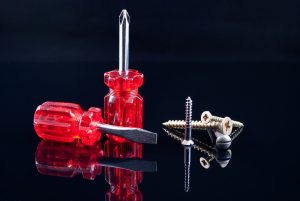 If you’re looking to buy screws, you’ll need to choose between metal or wood. While there are dozens if not hundreds of different types of screws, most fall under the category of wood or metal, depending on the application in which they will be used. So, what’s the difference between the two, and which type should you choose?
If you’re looking to buy screws, you’ll need to choose between metal or wood. While there are dozens if not hundreds of different types of screws, most fall under the category of wood or metal, depending on the application in which they will be used. So, what’s the difference between the two, and which type should you choose?
Before we begin, it’s important to note that both metal and wood screws are available in the same standard lengths, usually ranging from 1/4 inch to 3 inches. You can also drive both types using the same tools, such as a screwdriver. The differences between them, however, lie in their respective application, which affects several subtle characteristics.
In short, wood screws are designed to be driven into wood materials, while metal screws are designed to be driven into metal materials (hence the names). If you’re attempting to attach sheet metal, you should choose metal screws. They are easier to drive into metal, and will offer a greater level of strength and security. On the other hand, wood screws are better suited for applications involving plywood, lumber and other wood materials. Although you can use metal screws in wood, wood screws have been meticulously designed for this very purpose. Therefore, they have a few features that make them easier to drive into wood.
Wood screws are typically available in shorter threading, usually up to an inch. In comparison, metal screws offer longer threading at two or more inches. The pattern of this threading is also different. Metal screws are threaded through the entire body, while wood screws are not. Furthermore, metal screws have more pitches — number of threads per inch — than their wood screw counterparts.
It’s also worth noting that metal screws are preferred for applications where self-tapping is needed. As the name suggests, self-tapping screws are designed to drill their own pilot hole while they are driven into the material. Self-tapping screws are usually designed for metal materials.
To recap, metal and wood screws share several common characteristics: you can find them in the same sizes; they are driven using the same tools; and they are even available in the same materials. Hopefully, this gives you a better understanding of the differences between metal and wood screws. Just remember to consider the material in which you are driving the screw, and if it’s wood, choose wood screws, and if it’s metal, choose metal. Whenever you need metal screws, think Monroe.
